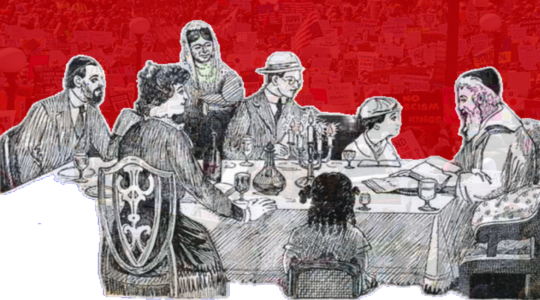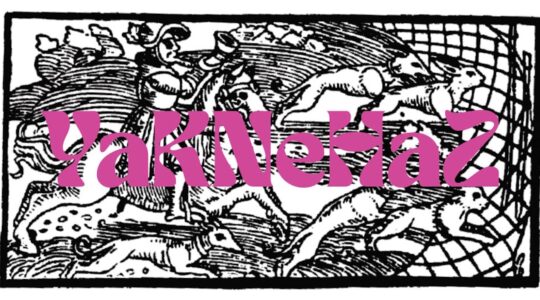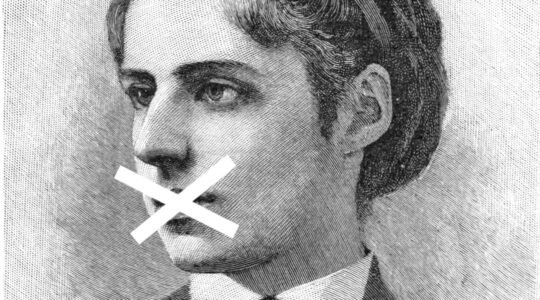lOS ANGELES (JTA) — Reports of a fire at Majdanek that damaged the barracks housing hundreds of thousands of shoes of the Jews murdered in the death camp should cause us to shudder. Something monumental has been lost.
A word about Majdanek: The camp is situated in a valley just outside the major town of Lublin, in proximity to Little Majdan, from which it derived its name. It was situated in the Polish territory annexed to the Third Reich. During the war, it was part of Germany proper.
Majdanek was captured whole in July 1944. Unlike at Auschwitz, the Nazis had no time to evacuate the camp or to burn its contents. Its liberation was featured on the front page of The New York Times. H.W. Lawrence, a correspondent for the Times, wrote: "I have just seen the most terrible place on Earth." These revelations were not given much credence. The very existence of something as awful as a death camp seemed impossible. Even graphic films of the camp shown in Britain and the United States were dismissed as Soviet propaganda.
Because Majdanek was captured whole, those who visit the death camp see far more than they might see at Auschwitz. As any visitor to the camp will tell you, Majdanek is more primitive, more actual, more real and more powerful.
Shoes
Visitors to Majdanek would walk through the barracks of shoes, the shoes of the 500,000 Jews from the various ghettos and camps who entered but did not leave. To me, that barracks was the most powerful part of a visit to Majdanek, more moving even than the gas chambers and crematoria that one sees intact at the top of the hill, more powerful still than the pyramid of ashes that form a mountain just outside the gas chamber.
Moses Schulstein, the great Yiddish poet, wrote of these shoes in his poem “I Saw a Mountain”:
I saw a mountain
Higher than Mt. Blanc
And more Holy than the Mountain of Sinai.
Not in a dream. It was real.
On this world this mountain stood.
Such a mountain I saw — of Jewish shoes in Majdanek. …
Hear! Hear the march.
Hear the shuffle of shoes left behind — that which remained.
From small, from large, from each and every one.
Make way for the rows — for the pairs,
For the generations — for the years.
The shoe army — it moves and moves.
“We are the shoes, we are the last witnesses.
We are shoes from grandchildren and grandfathers.
From Prague, Paris and Amsterdam.
And because we are only made of stuff and leather
And not of blood and flesh, each one of us avoided the hellfire.
We shoes — that used to go strolling in the market
Or with the bride and groom to the chuppah,
We shoes from simple Jews, from butchers and carpenters,
From crocheted booties of babies just beginning to walk and go
On happy occasions, weddings, and even until the time
Of giving birth, to a dance, to exciting places to life…
Or quietly — to a funeral.
Unceasingly we go. We tramp.
The hangman never had the chance to snatch us into his
Sack of loot — now we go to him.
Let everyone hear the steps, which flow as tears,
The steps that measure out the judgment.”
I saw a mountain
Higher than Mt. Blanc
And more Holy than the Mountain of Sinai.
The shoes of Majdanek are rotting. They smell. The rot and the smell viscerally illustrate the distance that stands between that time and our time. They bear witness to the erosion of time, which we want to decouple from the erosion of memory.
In a barracks adjacent to the barracks housing the shoes, the visitor files past the uniforms of men and women, even of children who lived in this camp, who died in this camp. Human beings once wore those uniforms and those shoes; once, they were alive; now, they are dead. One can sense their absence; the visitor must imagine their presence.
How did the shoes and uniforms arrive at Majdanek?
Majdanek was the place where the warehouses from Aktion Reinhard (Operation Reinhard, the Nazis’ code name for their plan to exterminate Polish Jewry) were located, where the clothing and valuables taken from the prisoners were collected, sorted and stored, and shipped back into Germany.
The death camp was also the headquarters for the destruction of regional ghettos and the place of supervision for the Aktion Reinhard camps — Sobibor, Belzec and Treblinka.
So much was lost in the fire – the material remains of the people who were consumed there and elsewhere by fire, and whose burial place was the sky.
I cried when I heard of the flames that consumed those shoes, and then I thought again. Perhaps after 66 years of bearing witness to the hell fire, the shoes – made of fiber and leather – were reunited with the grandfathers and grandchildren from Paris, Prague and Amsterdam, the men, women and children of flesh and blood.
(Michael Berenbaum is a professor of Jewish studies and director of the Sigi Ziering Institute: Exploring the Ethical and Religious Implications of the Holocaust at the American Jewish University in Los Angeles. He was the project director for the creation of the U.S. Holocaust Museum and is the former director of its research institute.)
JTA has documented Jewish history in real-time for over a century. Keep our journalism strong by joining us in supporting independent, award-winning reporting.






